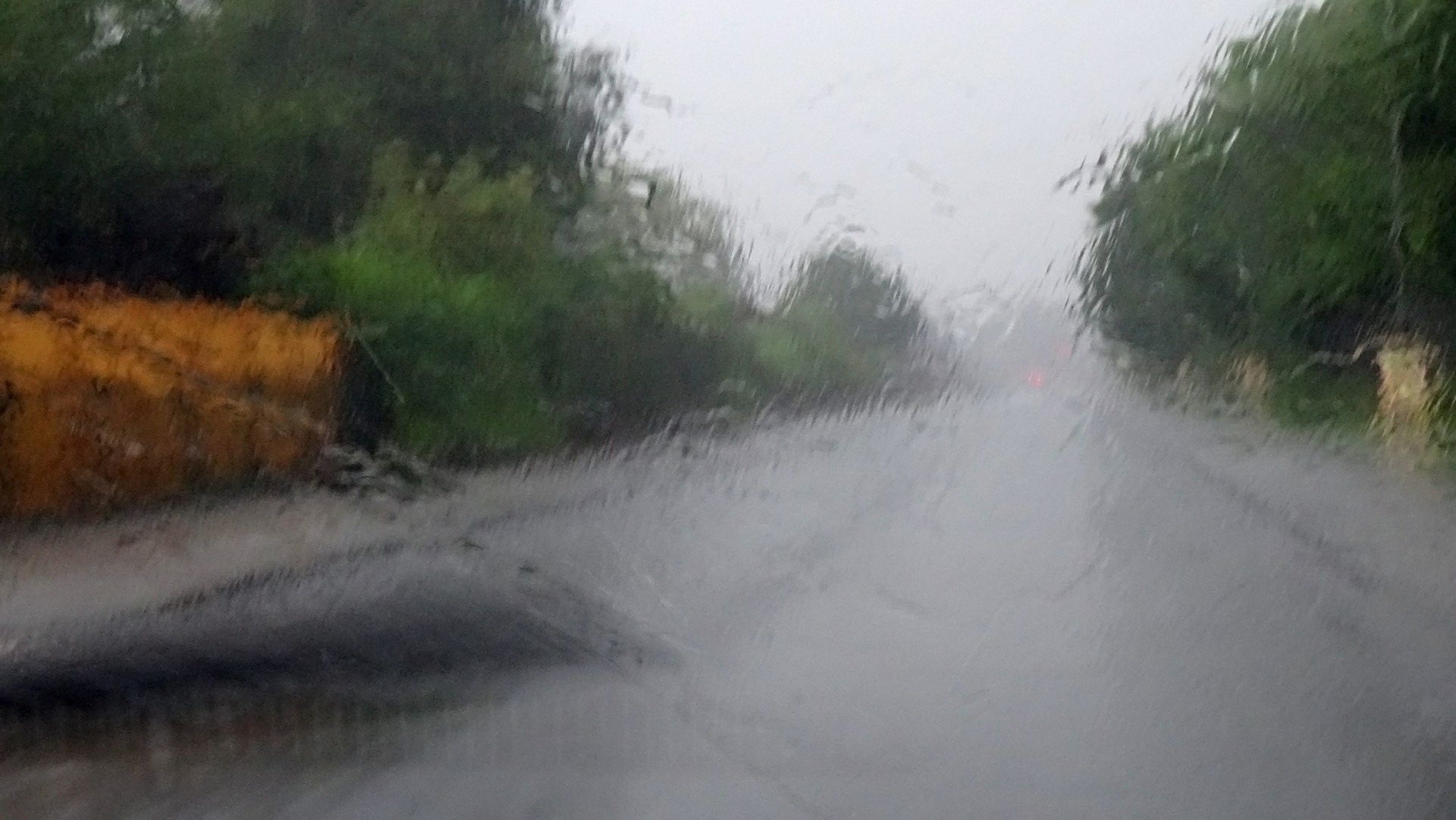What do I do in heavy rain?

Summer, sun, sunshine - heavy rain. In the summer months, heavy rainfall and storms are a regular occurrence. Yet we all want to enjoy the nice weather and fly off on holiday. On your way towards relaxation, you may unexpectedly encounter thunderstorm fronts and very dark clouds. But what to consider in the event of a change in the weather?
Defensive driving
If the sky suddenly turns dark and rain pours down on you, your car and the road, you as a driver must act calmly and with foresight. If you are surprised by rainfall or if the rain increases, reduce your speed and increase the distance to the car in front. The wet road increases your braking distance and the rain limits your visibility to a large extent, so that your reaction time is also increased. Therefore, make sure that you adapt your speed to the visibility. Driving too fast in low visibility conditions can quickly lead to accidents, especially on wet surfaces. Switch on the lights and, if necessary, turn up the fan to prevent fogged windows. A slippery road surface should not be underestimated - on many motorways there are speed limit signs with the words "in wet conditions" not only for decoration, but especially for your protection.
Aquaplaning - What now?
Most people know and fear the term. The moment when the tyre loses contact with the road and "floats up". There is a layer of water between the tyre and the road, which makes steering and braking manoeuvres almost impossible due to the lack of grip - there is a risk of skidding. You realise that you are experiencing aquaplaning? Don't worry, stay calm and hold the steering wheel well and as straight as possible. Avoid hasty steering and braking. Take your foot off the accelerator, keep the vehicle straight. Abrupt braking carries the risk of rear-end collisions, because at first the braking forces of the front wheels cannot be transferred to the road. As soon as contact with the ground is restored, the deceleration is all the greater and stronger. Quick steering can become an unintentional, uncontrolled and very dangerous drift manoeuvre, as the steering is also offset.
Signs of road sections where aquaplaning can occur are, for example, foam in puddles of water, water rushing in the wheel arch and spray coming up from the vehicle in front. A spongy feeling in the steering wheel or spinning of the tyres are further indications. Subways, bends, depressions, ruts and the area under bridges are particularly susceptible. In addition to the "floating" of the car, damage to the engine compartment is also possible due to the large amounts of water. If so, it is usually the electrics that are affected or, in the worst case, the engine directly.
Rain and wind
Rain usually brings with it winds, and unfortunately these are rarely light. They can be particularly dangerous for drivers of light vehicles (e.g. roadsters or microcars), SUVs or trailers. Near bridges, on bridges or in forest aisles, the winds can catch and move the car. Near trees or debris, pay particular attention to falling branches or rocks. Many typical sources of danger have signs or even windsocks installed to indicate the strength of the wind.
You must also drive defensively in the city, as pedestrians or cyclists are also affected by the weather and may enter the road carelessly.
The basic rule is: keep calm, reduce your speed and drive with foresight. This is the only way for you and other road users to reach your destination or your parking space at the airport safely. You haven't booked a parking space yet, but you're already planning your holiday? Then reserve your parking space right here. We wish you a safe journey!



